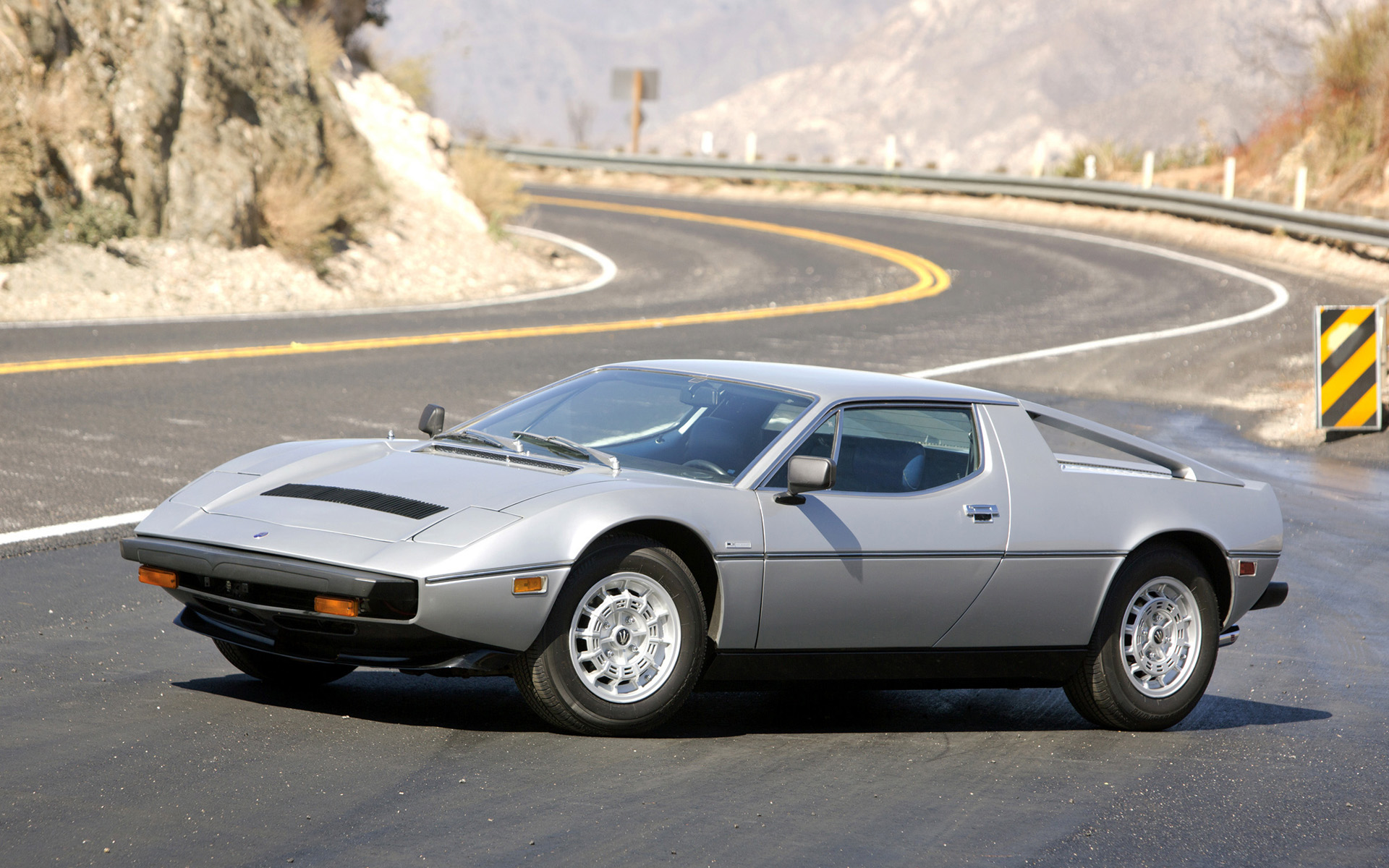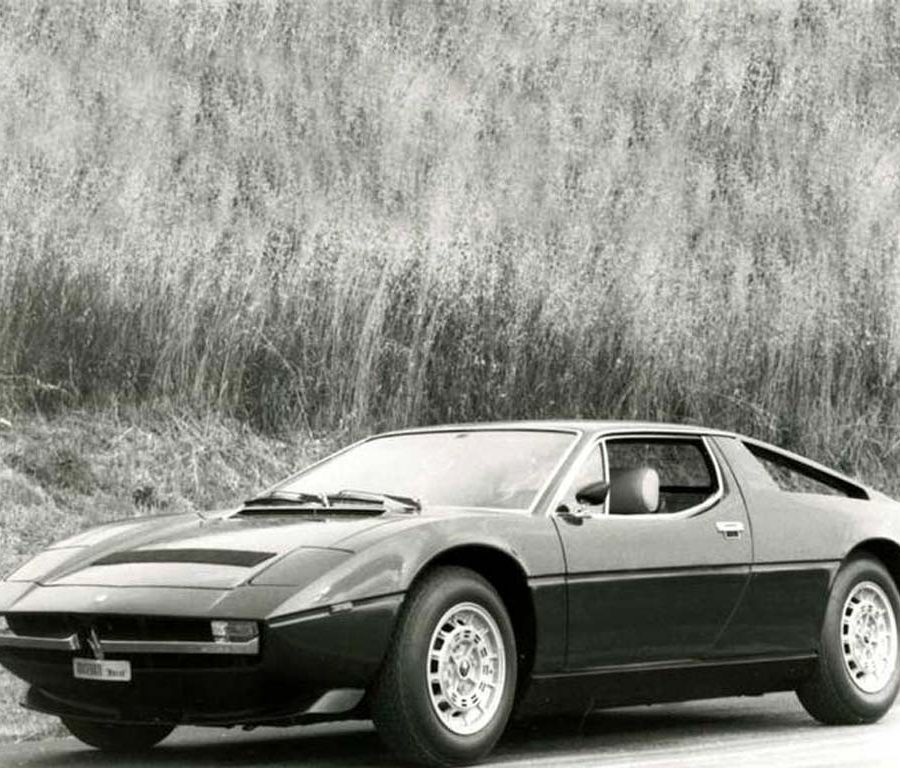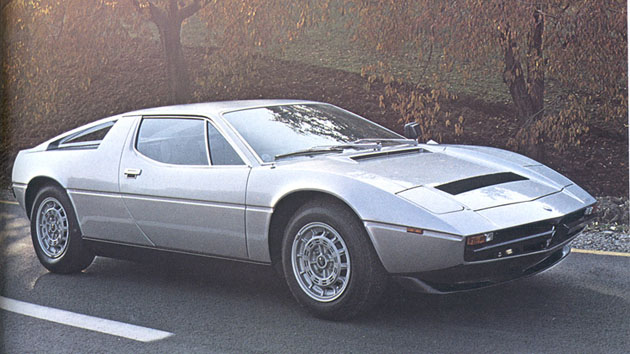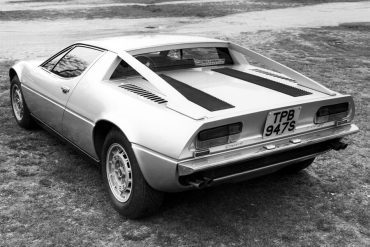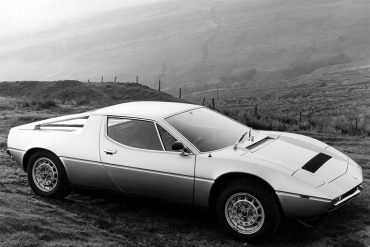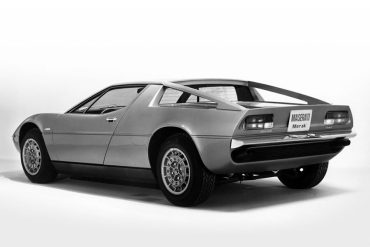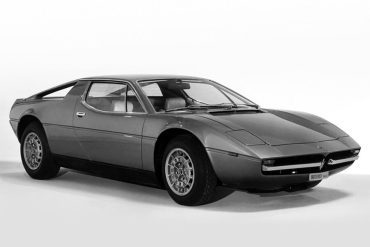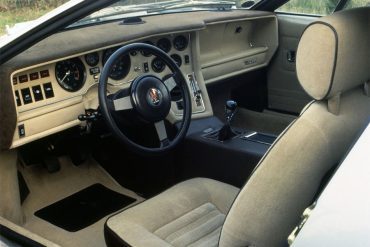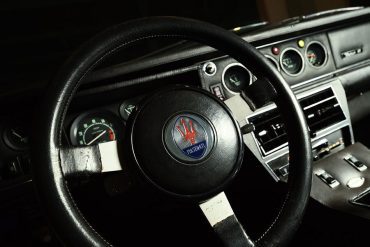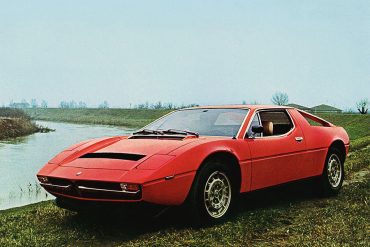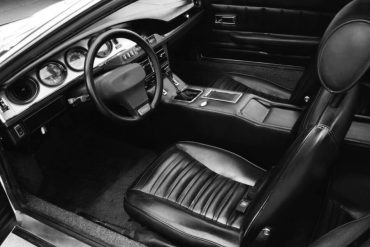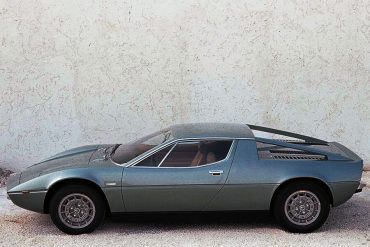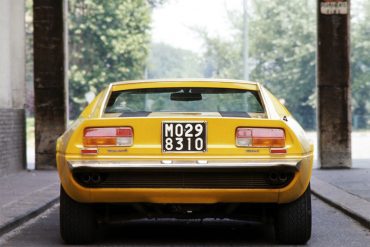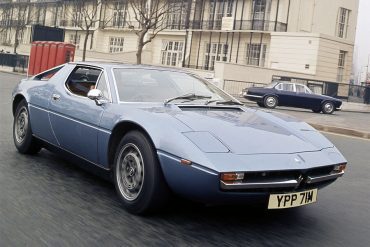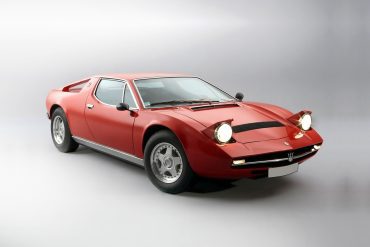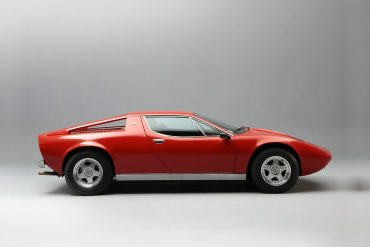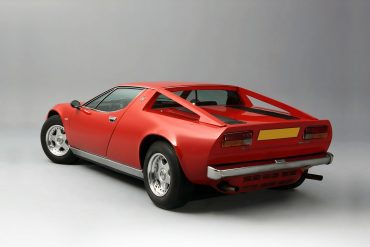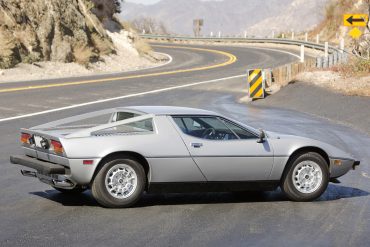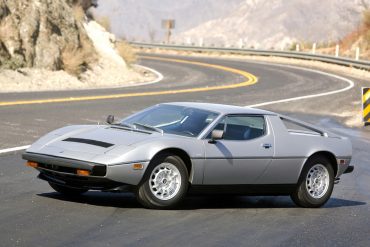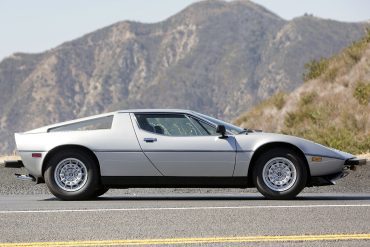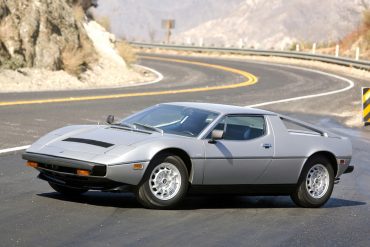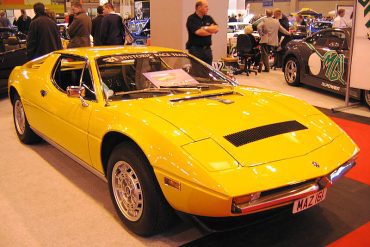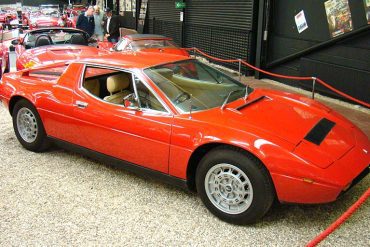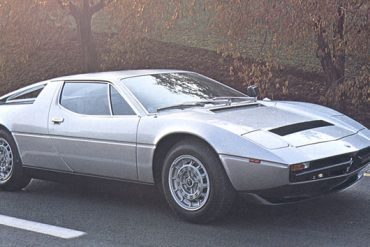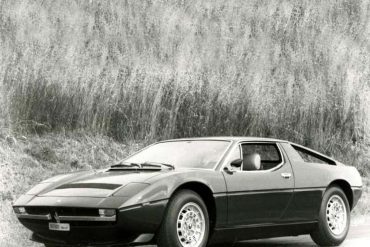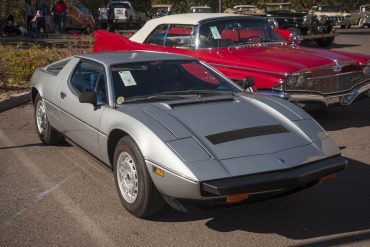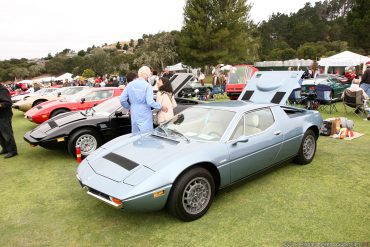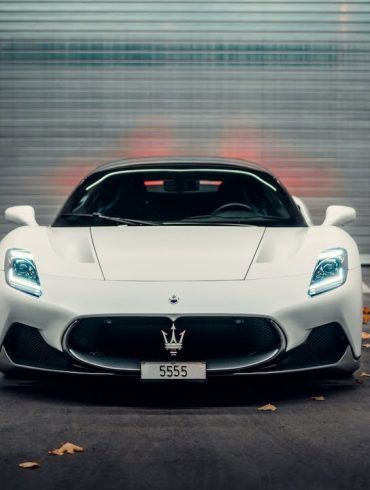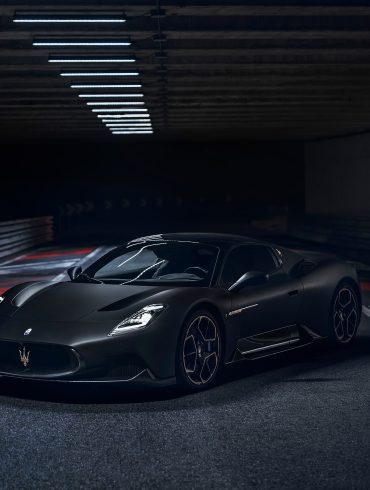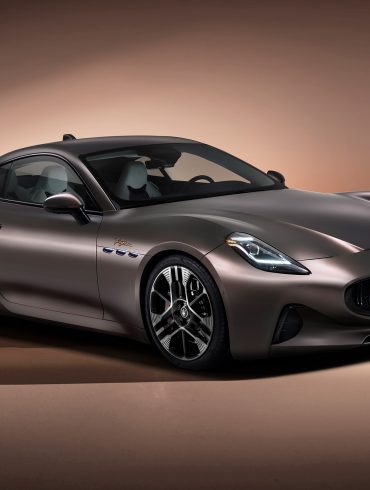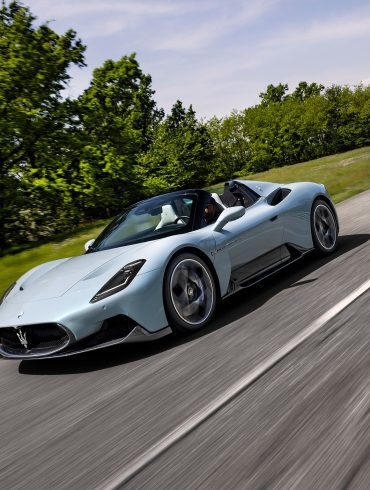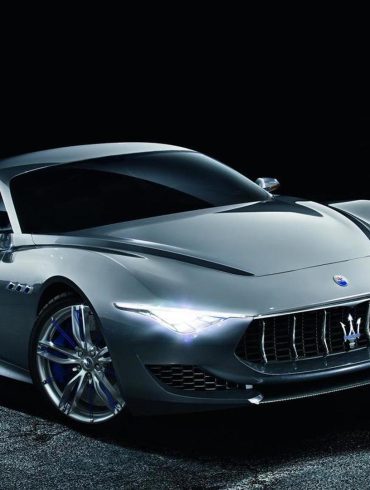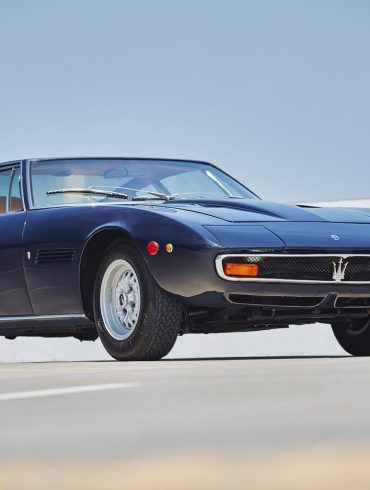1972 Maserati Merak The Maserati Merak was produced from 1972, when it was introduced at the Paris Auto Salon, until 1983. During this time two special models were made, the Merak SS and the Merak 2000 GT. The SS was built as a high-performance version of the car. It had...
Maserati Merak
1972 - 1983
Despite it's Giugiaro inspired supercar looks, the original 190 bhp Merak of 1972 was anything but a super performer. However, a change in ownership at Maserati from Citroen to De Tomaso was to change all that with the introduction of the SS in 1975. The new model benefited from an increase in power to 200bhp with an accompanying modest rise in torque. Handling was improved by the introduction of wider wheels but stopping power remained a weak point due to the retention of the quirky Citroen hydraulic braking system.
Overview / Variants / Models In-Depth / Image Gallery / More Updates
Overview
In January 1968, when Citroen assumed control of Maserati, a new era began for the Italian luxury car manufacturer, marked by a fresh lineup of innovative models. At the acquisition's outset, Maserati boasted a diverse range of five models, including the V8-equipped Ghibli, Mexico, and Quattroporte, alongside the Sebring and Mistral, powered by straight-six engines. However, by mid-1970, production ceased for the six-cylinder vehicles, the Quattroporte was phased out, and the Indy was introduced, offering a more contemporary 2+2 option compared to the dated Mexico.
The following years saw the introduction of new models, discontinuation of the Mexico and Ghibli, and the launch of the mid-engine Bora in March 1971, followed by the Merak and Khamsin in late 1972, completing Citroen's overhaul of the Maserati lineup.
The Bora emerged as Maserati's flagship, featuring mid-engine configuration and modern Giugiaro design. Contrasting with the era's typical impractical supercars, the Bora offered refinement and comfort. The Merak, introduced as a more affordable alternative to the Bora, debuted at the Paris Motor Show in October 1972. With a smaller V6 engine, it aimed to compete with the successful Porsche 911, providing a budget-friendly option with the potential for two additional seats.
Both the Bora and Merak shared a similar steel structure, but the Merak featured a modified rear to accommodate a new subframe for the drivetrain and suspension. Despite sharing a 2600mm wheelbase, both cars showcased double wishbone suspension and were equipped with Citroen's innovative hydro-pneumatic system for brake operation.
The Merak's engine, a 90° V6, initially developed for the Citroen SM, underwent modifications to increase displacement and power for the Merak, achieving a higher output with three Weber carburetors. Unlike its contemporaries, the Merak's engine was mounted longitudinally, paired with Citroen's five-speed transaxle and a hydraulically-operated clutch.
Despite their visual similarities, the Merak and Bora were distinguishable by specific design elements, with the Merak featuring a unique rear window design and flying buttresses for easy maintenance. Both models sported a Giugiaro design, with hydraulic systems replacing electric motors for the retractable headlights.
The Merak's interior borrowed the Citroen SM's dashboard design, featuring a unique gauge layout and a single-spoke steering wheel. Standard features included electric windows, and the rear seats could be folded to increase luggage space.
As the 1970s progressed, the global oil crisis severely impacted the high-end car market, leading to Citroen's bankruptcy in 1974 and subsequent acquisition by Peugeot. Amid these challenging times, Maserati introduced the Merak SS in 1975, offering a lighter, more powerful variant with aesthetic updates and improved performance. However, the timing was less than ideal, with sales declining sharply.
In 1975, Maserati found new life under a state-owned holding company and Alessandro de Tomaso. Production changes included replacing some Citroen parts with more traditional systems and adjustments to accommodate wear issues.
The introduction of the Merak 2000 in 1977 targeted Italian tax regulations, offering a smaller engine to benefit from lower tax rates. This variant was easily identified by its distinct styling and was available in two colors.
Production of the Merak series continued until 1983, with a total of 1,817 units across all versions, highlighting a significant chapter in Maserati's storied history under Citroen's ownership.
Maserati Merak Basics
Manufacturer: Maserati
Production: 1972–1983
Produced: 1,830 units
Designer: Giorgetto Giugiaro
Body style: 2-door 2+2 coupé
Layout: Rear mid-engine, RWD
Engine: 3.0 L 90° V6, 2.0 L 90° V6
Transmission: 5-speed Citroën C35 manual
Power: 220 hp
Torque: 199 lbft
0-60 mph: 7.7 sec*
0-100 mph: 20.3 sec*
Wheelbase: 2,600 mm (102.4 in)
Length: 4,335 mm (170.7 in)
Width: 1,768 mm (69.6 in)
Height: 1,134 mm (44.6 in)
Kerb weight: 1,400–1,430 kg (3,086–3,153 lb) (dry)
Did You Know?
The Merak shares its design lineage and core elements with the legendary Maserati Bora, but with a more practical approach.
Unlike the V8-powered Bora, the Merak sports a smaller but punchy 3.0L V6 engine derived from the Citroën SM.
The Merak's unique feature was the addition of small rear seats, giving it slightly more practicality than the two-seater Bora.
The Merak uses Citroën's high-pressure hydraulic system for features like the brakes, pop-up headlights, and adjustable seats.
The more powerful Merak SS arrived in 1975 with a power bump, a lighter body, and a unique three-spoke steering wheel.
This Giugiaro-designed car, which Autocar described on 4 January 1975 as "outstandingly good-looking", was the lesser sibling to the prettier-still Bora supercar.
Autocar
Maserati Merak Variants
The Merak was Maserati’s answer to the oil crisis, which affected the sales of cars with large-displacement engines. This sibling of the Bora used a modified version of the type C.114 engine, which Maserati had engineered for Citroën. This smaller V6 engine made it possible to equip the Merak with two small rear seats, unlike the strictly two-seat Bora. In 1976, a lighter and more powerful version was presented, the Merak SS. While Maserati already had a more economical alternative to the Bora in the V6 Merak, new company chairman Alejandro De Tomaso felt a version equipped with a smaller engine was called for to reinvigorate sales. Thus the Merak 2000GT was born.
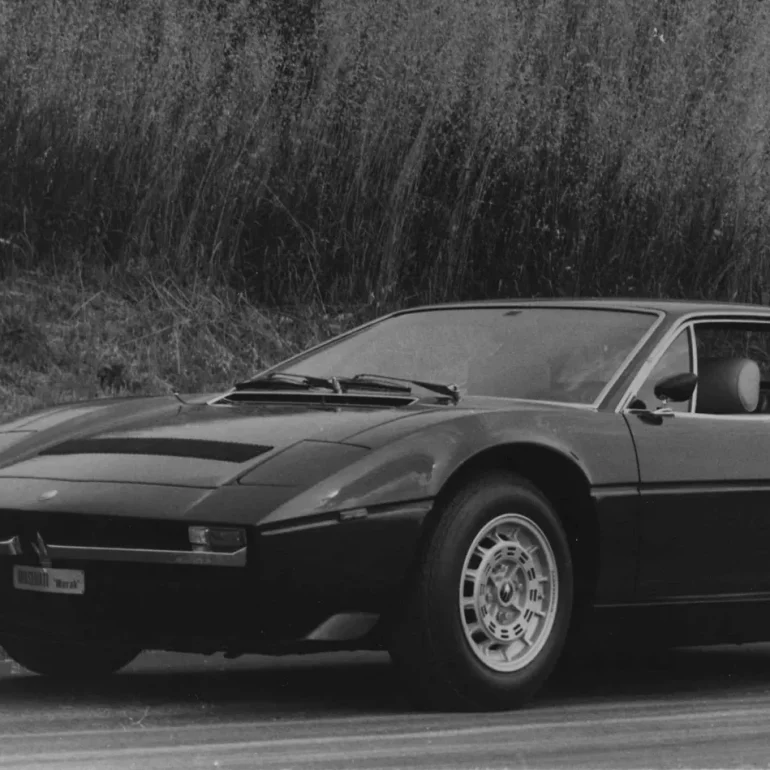
Maserati Merak
Model: Tipo AM122
Years: 1972 - 1975
Produced: 830 units
Engine: 2,965 cc 90° V6
Power: 190hp @ 6,000rpm
Top Speed: 150 mph
The initial version of the Merak featured a three-liter engine producing 187 hp thanks to three Weber twin-choke carburetors. Early models of the left-hand drive Merak, produced from 1972 to 1975, shared the dashboard design with the Citroën SM. A total of 630 units were manufactured with this dashboard configuration until 1974. Right-hand drive models from the same era adopted the Bora's dashboard layout, which included a three-spoke steering wheel.
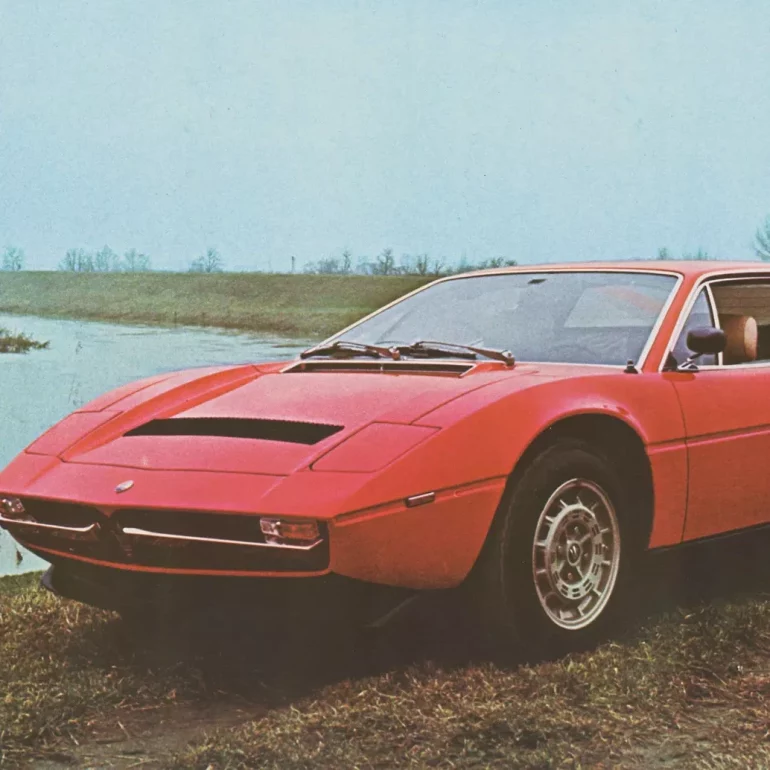
Maserati Merak SS
Model: Tipo AM122/A
Years: 1976 - 1982
Produced: 787 units
Engine: 2,965 cc 90° V6
Power: 220hp @ 6,500rpm
Top Speed: 155 mph
Introduced at the 41st Geneva Motor Show in March 1975, the Merak SS brought a blend of reduced weight and increased power to the lineup. The SS model boasted a decrease in weight by 50 kg (110 lb) and an enhancement in power output to 220 hp, thanks to larger 44 DCNF 44 carburetors and higher compression ratio. Distinguished by a black grille nestled between its pop-up headlights, the SS featured an updated interior with a Maserati-designed dash.
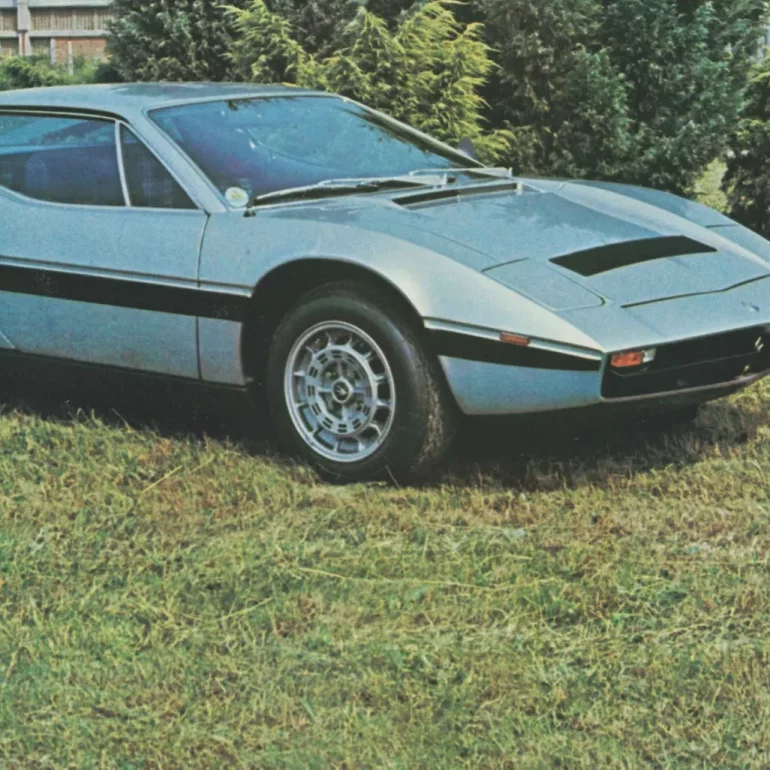
Maserati Merak 2000
Model: Tipo AM122/D
Years: 1980 - 1982
Produced: 200 units
Engine: 1,999cc 90° V6
Power: 159hp @ 7,100rpm
Top Speed: 137 mph
At the Turin Auto Show in November 1977, Alejandro de Tomaso unveiled the Merak 2000 GT, essentially a scaled-down version of the Merak equipped with a two-litre engine. This model was tailored primarily for the Italian market in response to new legislation that levied a hefty 38% Value Added Tax (VAT) on cars with engines exceeding 2,000 cc, compared to the standard 19% VAT. This placed the Merak in direct competition with the Urraco P200 and the Dino 208 GT4.
Giorgetto Giugiaro had brilliantly adapted the Bora’s styling for the 2+2 Merak, with a flat rear deck and (removable) flying buttresses instead of the sloping screen. The Giulio Alfieri-designed quad-cam V6 was superb and, with great handling plus a nice five-speed ’box and a big front boot, the Merak was a practical supercar...
Classic And Sportscar


